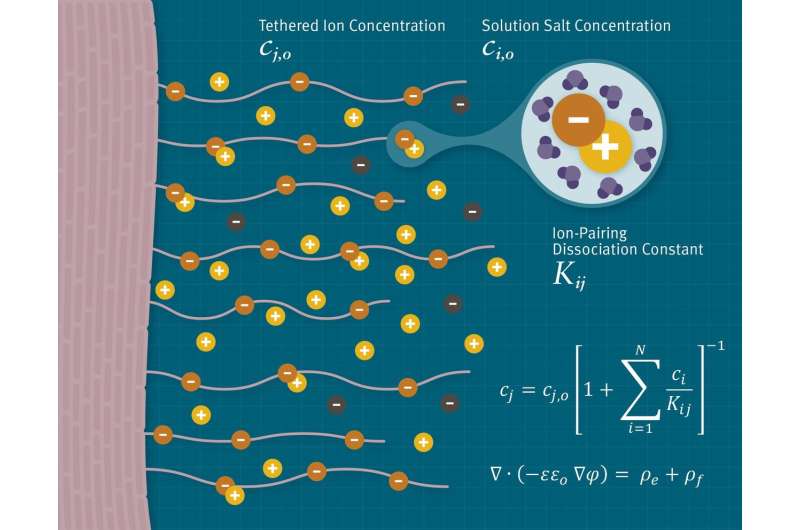Research describes how ions play key roles in controlling mucosal surfaces

Two recent papers from Keck Graduate Institute (KGI) Professor James Sterling and Shenda Baker, President and COO at Synedgen, describe how ions interact with the mucosal surface glycans to ensure health.
The importance of ions, or electrolytes, in human health is well known, but the exact role these ions play in biology is more complicated than previously thought. Complex sugars known as glycans, which coat the surfaces of cells and mucosal surfaces, are some of the most negatively charged molecules in biology. In our nose, throat, eyes, lungs, and GI tract, these surfaces play an important role in protecting the body from pathogen invasion and exposure to the environment.
The paper "A Continuum Model of Mucosa with Glycan-Ion Pairing ," was published Jan. 15 in the journal Macromolecular Theory and Simulations.
"The role of ion-pairing at cell surfaces has important implications for drug deliver, so we are working with KGI Assistant Professor Kiana Aran to improve mucosal drug delivery," Sterling says. "Similarly, the interaction of toxins with cells is under investigation with KGI Assistant Professor Mikhail Martchenko in his lab's work on pore-forming peptides."
While positive and negative charges are attracted to each other, two different ions (say, sodium and potassium) with the same charge do not interact in the same way with the same negative ion, and the nature of these differences is called lyotropy.
"A key implication of these subtle differences is that glycans interact in unique ways with each type of ion," says Sterling. "Specific differences in the way that ions pair with counterions can cause large changes in both the electrical potential and the thickness of the protective layer on cells that prevent pathogen attachment and invasion. A complex interaction exists between attraction and repulsion as the charges move in response to each other, both positive and negative. Surprisingly, the surface structures can be very different for different ions, even if the same number of ions are present."
In mucosal surfaces, such as the lung, the mucus is comprised of negatively charged polyelectrolytes called mucins that are very sensitive to changes in ions. In patients with cystic fibrosis, for example, the genetic defect in the CFTR gene reduces ion transport, which causes the mucus to be thick and viscous. Baker and Sterling describe how the thickness of the mucosal layer and its electrical potential are modified by changes in ion type (carboxylates or sulfates on the mucins).
"The understanding of how each type of ion affects the structure, electrical potential, and fluid behavior of the airway-surface layers in the lung has direct implications for designing drug targets that influence pulmonary behavior," notes Baker.
The paper contemplates ion interactions and electrical potentials in a variety of biologically important hydrogels and cell surfaces, and incorporates specific ion-ion interactions for each ion pair type. This work follows a 2017 publication by Drs. Baker and Sterling in Colloid and Interface Science Communications, titled "Electro-lyotropic equilibrium and the utility of ion-pair dissociation constants," establishing the feasibility of these models for biohydrogel structure determination .
Professor Sterling also presented aspects of this work at KGI's 13th Annual Research Retreat on Jan. 12. His presentation may be viewed through the following link: Partitioning and Pairing in Biology.
More information: James D. Sterling et al, A Continuum Model of Mucosa with Glycan-Ion Pairing, Macromolecular Theory and Simulations (2018). DOI: 10.1002/mats.201700079
Provided by Keck Graduate Institute




















